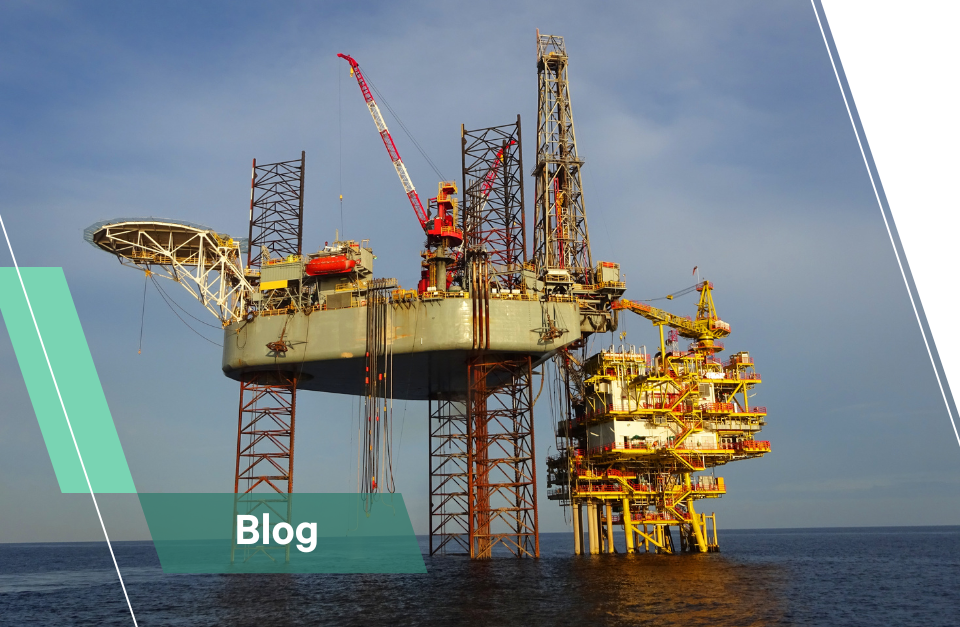
Maximising platform well design: the hidden power of early-stage offshore analysis
Martin Harrop, Offshore Analysis Manager, Aquaterra Energy
Estimated read time: 7mins
Blog summary
Our Offshore Analysis Manager Martin Harrop, explores the hidden power of early-stage offshore analysis in platform well design. This blog examines how integrating conductor analysis from the outset can drive cost savings, enhance structural integrity, and improve long-term operational efficiency. It highlights key considerations such as conductor size optimisation, fatigue management, installation methods, and rig resilience – ensuring a strategic approach that maximises return on investment and minimises environmental impact.
The Massive Investment Behind Platform Wells
In the high-stakes world of offshore drilling, platform well conductor design represents a critical intersection of engineering precision and strategic investment. As someone who has spent 15 years analysing conductor systems, I’ve witnessed how early-stage technical insights can transform a potentially marginal project into a remarkably efficient and cost-effective offshore operation.
Let’s put the scale into perspective. When an operator decides to install a platform, they’re not just drilling a few wells – they’re potentially committing to a multi-year campaign that could involve 15, 20, or even 30 conductors. This isn’t just a project; it’s a generational investment. The capital expenditure is enormous, with returns expected to stretch over 20, 30, or even 50 years of production. Every technical decision made at the outset can have profound implications for the platform’s long-term economic viability.
The Conductor: A Critical Yet Often Overlooked Component
Surprisingly, the conductor – often considered a relatively simple component – can become the most critical factor in a platform’s operational lifecycle. I’ve seen numerous cases where conductor condition ultimately drives the decision to abandon a well, even when they could still potentially produce. Significant corrosion or structural limitations can force expensive interventions or complete well abandonment, turning a promising asset into a financial liability.
Early Analysis: A Proactive Approach to Design
The key is integration and early-stage analysis. Traditionally, platforms are designed with a predetermined guide size – say, 38 inches – and conductor analysis becomes an afterthought. This approach is fundamentally flawed. By bringing technical analysis into the initial design phase, operators can unlock multiple optimisation opportunities:
Connector and Size Optimisation
Consider the potential savings from simply reducing conductor size. Moving from a 36-inch to a 30-inch conductor might seem minor, but when multiplied across 15 wells, the procurement savings become substantial. We’re not just talking about material costs – smaller conductors can reduce guide size requirements, minimise centraliser expenses, and simplify overall platform design.
Fatigue and Structural Considerations
Platform wells experience complex loading conditions. Hydrodynamic forces from waves and currents create significant lateral loads that must be carefully managed. Early analysis allows engineers to understand and mitigate these loads, potentially reducing platform steel requirements by 10-20%. This translates directly into cost savings and reduced carbon footprint.
Installation and Operational Flexibility
The method of conductor installation – whether driven or drilled and cemented – has profound design implications. Different installation techniques require different guide specifications, centraliser approaches, and connector selections. Early analysis ensures that the platform design accommodates the most efficient installation method, rather than forcing compromises afterwards.
Rig Efficiency and Operational Resilience
Understanding the complex interactions between platform design, conductor systems, and drilling operations is crucial for maximising operational efficiency. By analysing potential wave and current conditions, operators can optimise rig deployment strategies, minimise downtime, and ensure continuous production. Our goal is to help drilling teams understand the absolute maximum allowable wave conditions, determine precise storm response protocols, and provide confidence in maintaining rig connectivity even during challenging environmental conditions. This approach allows drilling teams to make informed decisions about when to continue operations and when to implement protective measures, ultimately reducing costly interruptions and maximising rig uptime. Watch our latest video below optimising jack-up over platform well operations for a visual deep dive.
Long-Term Strategic Thinking
Perhaps most importantly, early-stage analysis isn’t just about immediate project optimisation. It’s about planning for the entire lifecycle of the asset. We’re considering not just production phase performance, but eventual well abandonment strategies. How will a rig land a blow-out preventer on potentially corroded conductors decades later? These are the questions that separate good design from exceptional design.
A Holistic Approach to Offshore Engineering
The message is clear: platform well design is a complex, interconnected system. Conductor analysis isn’t a standalone technical exercise – it’s a strategic approach that touches every aspect of offshore project development.
By integrating technical insights early, operators can:
- Reduce capital expenditure
- Optimise structural design
- Enhance long-term operational flexibility
- Minimise environmental impact
- Maximise return on investment
Conclusion
In an industry where margins are tight and technical challenges are constant, early-stage analysis isn’t just beneficial – it’s essential. As offshore exploration pushes into more complex environments, the operators who embrace sophisticated, integrated design approaches will be the ones who succeed.
Want to transform your platform well design strategy? Our team can help ensure success with enhanced project efficiencies, speak to us today.